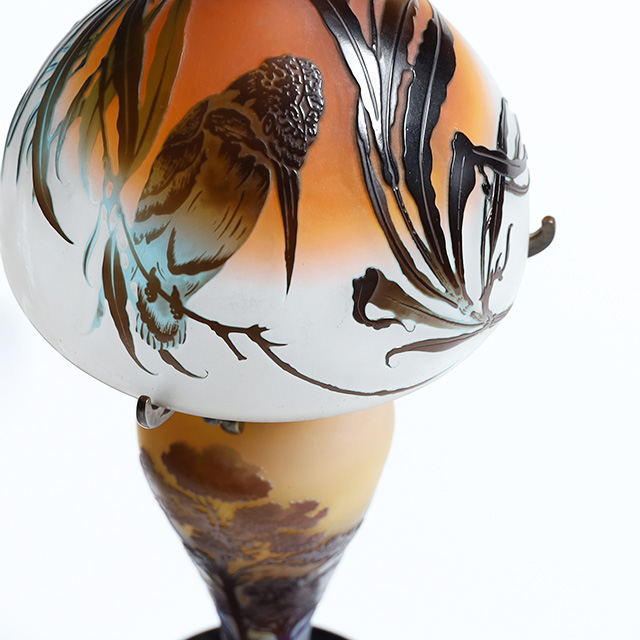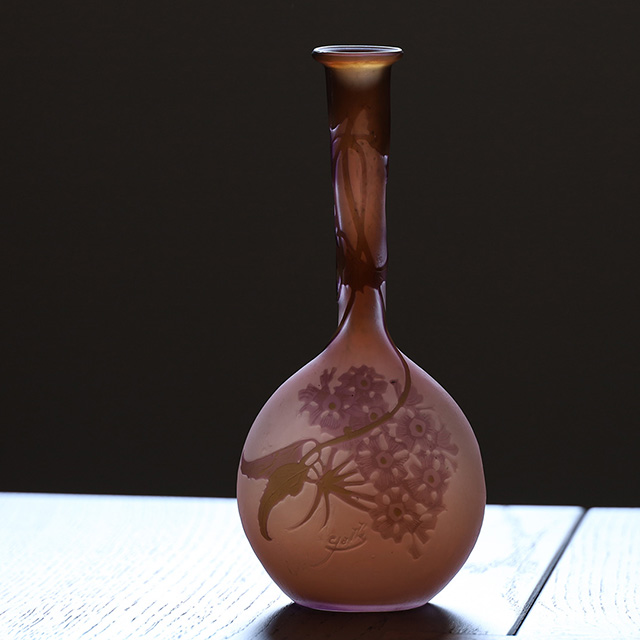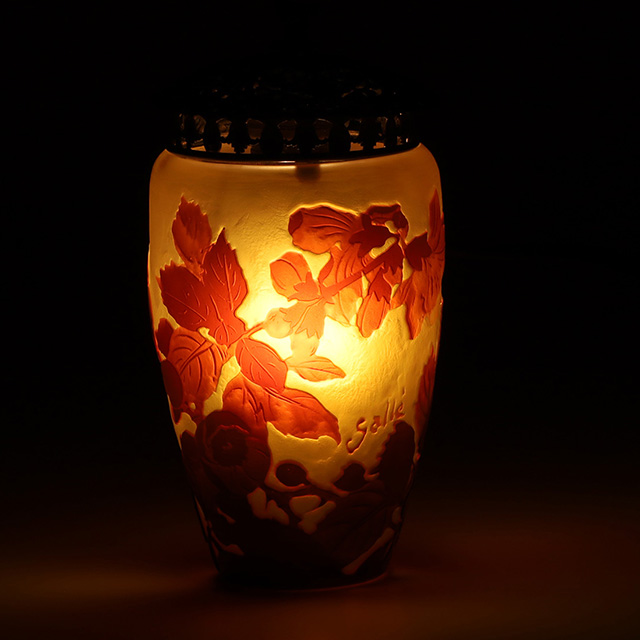Emile Galle
エミール・ガレ
Emile Galle 1846-1904
Emile Galle was born in france as the eldest son of Charles Galle.
In 1864, graduated from the Nancy Imperial High School, which excelled in rhetoric, literature, philosophy, botany, and history.
In 1865, went to study in weimar, germany, which studied literature, philosophy, botany, and mining, as well as architecture and decorative arts.
From 1866, mastered the art of glassmaking at the burgun, schwerer & cie. glassworks in meisenthal.
In 1867, officially joined father’s business, which manufactured and sold pottery and crystal glass, and was in charge of product development and manufacturing management.
In 1870, served as a volunteer in the franco prussian war.
In 1874, became the artistic director of father’s company.
In 1875, married Henriette Grimm(1848-1914), a pastor’s daughter.
In 1877, at the age of 31, officially took over the business. Through observation of nature, developed an innovative style that incorporated the shapes of flowers, plants, and insects.
In 1878, exhibited for the first time under his own name at the Third World Exposition in Paris, where won bronze medals in the glass and ceramics categories, and a silver medal in the garden decoration category for pottery. The newly developed “Moonlight Glass” came into the spotlight as an original work by Galle. This glass, which was made by mixing soda glass with small amounts of cobalt oxide to color it pale blue and which glowed softly and beautifully like moonlight, caused a great sensation, and similar glass was produced in england and germany as well. Became the Member of the French National Horticultural Society.
In 1884, Received the gold medal at the “Stone, Wood, Earth, and Glass” exhibition organized by the Central Union of Decorative Arts. Became the Honorary Member of the Geneva Horticultural Society.
In 1885, received the Legion d’honneur Chevalier(5th class). Opened the pottery studio and the glass muffle kiln. From this time onwards, the company expanded its activities to include the production of high end marquetry furniture, and its glass research progressed to include “Overlay Glass”, which involves layering multiple layers of coloured glass.
In 1889, at the 4th Paris Universal Exposition, exhibited in three categories: glass, ceramics, and furniture, winning the Grand Prix in the glass category, the gold medal in the ceramics category, and the silver medal in the furniture category. At this time, Galle created the new style(art nouveau)that broke away from the eclectic styles of the past, and winning the Grand Prix solidified the galle brand internationally.
In 1890, became the Honorary Member of the Brussels Botanical Exhibition Committee.
In 1891, became the Vice Chairman of the Nancy Central Horticultural Society.
In 1894, opened the glass factory “Galle Crystal Factory” in Nancy. For the first time, glass, ceramics and furniture production could be controlled in one place, with full supervision from material preparation to finishing. Around this time, began experimenting with advanced techniques never seen before, such as “Marquetterie” and “Patine”. At the same time, as the industrial artist, also began to focus on developing mass produced products aimed at popularizing them to the general public.
In 1898, patented the techniques of “Marquetterie” and “Patine”.
In 1900, received the Grand Prix in the glass and furniture categories at the 5th Paris Universal Exposition. Praised as the creator who had elevated craftsmanship to the level of art, and reputation became immovable.
In 1901, together with the Daum Freres, founded the “Provincial Union of Arts and Industries(Nancy Faction)” and became the chairman. Devoted himself to the development of the lorraine region’s industrial sector and to nurturing its future generations.
From 1902, with the spread of electricity in ordinary households, began commercializing lamps(electric lighting equipment)with built in light bulbs.
In 1904, Galle died of leukemia and his wife, Henriette Galle, who had been his assistant, took over management of the factory. However, in 1914, she also passed away and her second daughter’s husband, Paul Perdrize(1870-1938), became the company’s director. Complex and advanced manufacturing techniques such as marquetterie were abandoned, and mass produced products made of two or three layered overlay glass became the norm. Although the products were standardized, they maintained a consistent level of quality.
Production was temporarily halted during world war I(1914-1918), and then, affected by the great depression, the galle company closed in 1931.
In 1936, all assets, including property, buildings and inventory, were sold at auction.
We sell and purchase Emile Galle
We have a physical shop in Hakata-ku, Fukuoka City, where we sell and purchase works by Emile Galle. Drawing on a long career and rich experience in dealing, we promise to provide the finest service in the best interests of our customers. With the main goal of pleasing our customers, we will serve you with the utmost sincerity and responsibility until we close the deal.





